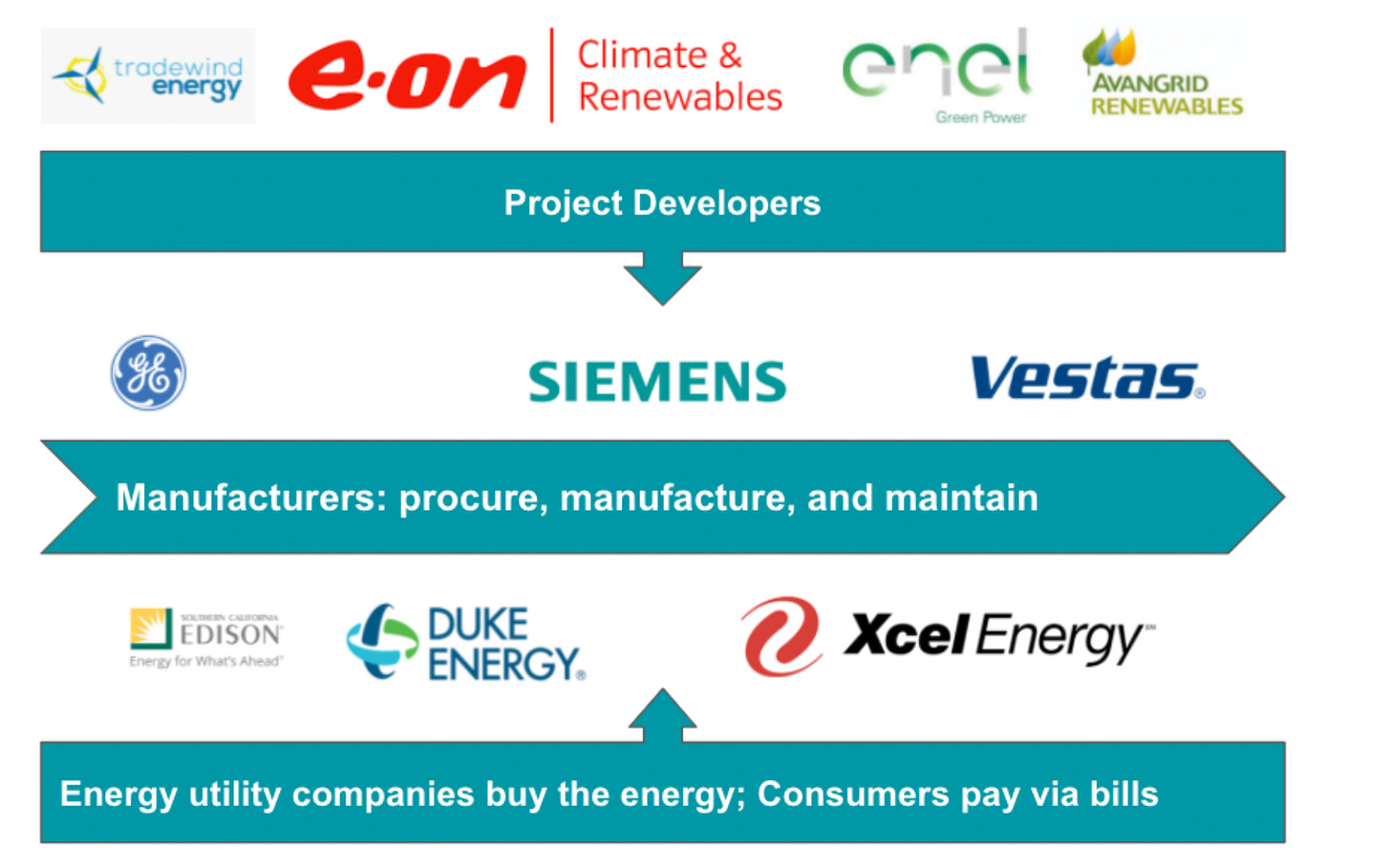Understanding Onshore Wind
Gigaton Potential
An increase in onshore wind turbines from 4.4% of world electricity generation to a wide range from 19.6-26.9% by 2050 could reduce emissions by 47-147 gigatons of greenhouse gases.
For reference: in 2019, the world emitted 51 gigatons of CO2-equivalent greenhouse gases. Project Drawdown estimates we need to cumulatively eliminate 1,000 GT from 2020-2050 to keep global warming below 2 degrees Celsius.
You Might Be Interested If...
You are passionate about decarbonizing our energy system
You love working on mature technologies that can scale up to make a big impact
Working on things that are tangible and physical fills you with joy
Why On Shore Wind is at an Inflection Point
Wind power is one of the fastest-growing renewable energy technologies. Today, 314,000 wind turbines supply nearly 4 percent of global electricity, and it will soon be much more. The table below shows the rapid growth of wind turbines around the world over the past decade. In the USA alone, a recent study found that 63% of USA land area is unrestricted for wind farm development which is sufficient to provide all-purpose 2050 U.S. energy with wind.
The wind industry is enabled by the proliferation of turbines, dropping costs, and increased performance. Ongoing cost reduction will soon make wind energy the least expensive source of electricity; experts anticipate this will happen within a decade. Wind power is super green with no fuel costs and no pollution. 😮
Unlike coal plants, onshore wind farms have tiny footprints; they usually don't use more than 1% of the land they sit on. What’s more, it now takes just one year or less to build a wind farm —quickly producing energy and an ROI.
Where you may want to work
💰 Project Developers: Develop and sometimes own and operate wind farms
Key responsibilities: handle site selection, do technical and financial feasibility studies, secure transmissions, work with manufacturers to procure the wind turbines, and secure power sales, construction, and financing agreements
Skills highlight: legal energy regulation, real estate, tax experts, financial analysts, and specialized environmental or geotechnical engineers
🏭 Manufacturers: Handle the development of the components (turbine, blades, and advanced drivetrains) and often follow on operations and maintenance
Key responsibilities: system design, manufacturing, supply chain management, and R&D
Skills highlight: supply chain, manufacturers, program management, engineering, and customer account management
⚡Utilities: Procure renewable energy for customers
Key responsibilities: Maintain equipment and deliver electricity or gas to customers; they also can provide the plans, rates, bills, and customer service
Skills highlight: environmental policy, program management, and data science
What are the challenges?
Transportation: Moving the increasingly large turbines, whose blades alone span more than 100 feet apiece, is a challenge
Pecos Wind Power, a New England startup, is developing mini wind turbines as a complement or alternative to rooftop solar
Limited locales: Wind power works best in windy, remote areas which are far from urban centers
The Vermont Public Power Supply Authority is working to site three to five turbines throughout the members’ service territories, then purchase that power from Pecos and sell it to members through power purchase agreements. Unlike typical community energy projects, a subscriber wouldn’t have to live in the specific territory being served by the project
Grid stability: The variability and seasonality of wind power require significant change to how the power system operates
Enabling technologies: Battery storage, demand-side management, and digital technologies are changing the power sector, opening doors to new applications that unlock system flexibility
Decommissioning wind farms: In Europe alone, almost 12,000 wind turbines are expected to be decommissioned in the next five years. Recycling and reusing of wind turbines need to be increased
Siemens Gamesa has announced that they can design a recyclable wind turbine blade
Size of wind farms: Large onshore wind units can make it difficult to do service and maintenance
Vertical axis wind turbines that have the axis perpendicular to the wind streamlines and vertical to the ground can enable core components to be closer to the ground, facilitating service and repair





